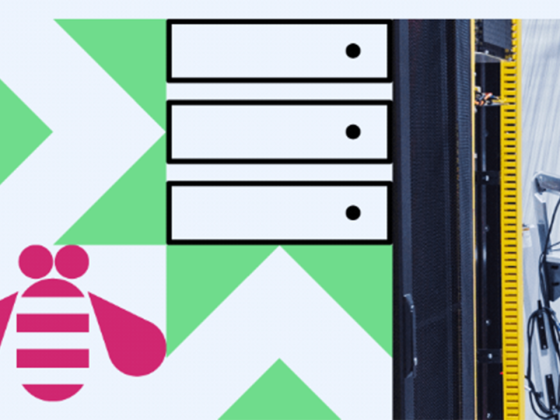The Fedora Project, a community-driven open source collaboration sponsored by Red Hat, Inc., announced the general availability of Fedora Linux 35, the latest version of the fully open source Fedora operating system. The new features and enhancements in Fedora 35 are aimed at improving the overall experience for all levels of users – from beginner to advanced.
This release continues the Fedora Project’s emphasis on delivering leading-edge open source technologies and includes updates spanning the Linux kernel to the desktop experience. Updates in Fedora 35 include:
From our partners:
With Fedora 35, the Fedora Project continues towards our vision of a world where everyone benefits from free and open source software built by inclusive, welcoming, and open-minded communities. We prioritize bringing the latest Linux innovation to our users. This latest version is focused on polishing features and support for improved performance and an even better user experience – helping to bridge the gap between new and expert users.
- The introduction of GNOME 41 for Fedora Workstation. GNOME 41 changes to multitasking in GNOME along with a new remote desktop client, a Mobile Settings panel to manage mobile network connections and a number of performance enhancements. Additionally, the horizontal workflow introduced in GNOME 40 has new enhancements designed for ease of use.
- Improved third-party application support, making it easier to install a selection of third-party software via Flathub. This enables users to install apps like Zoom, Minecraft, Bitwarden and other popular applications available via Flathub that will show up right in GNOME Software.
- The addition of Fedora Kinoite spin. Similar to Fedora Silverblue, Fedora Kinoite features the KDE Plasma desktop in an reprovisionable desktop offering that makes use of RPM-OStree and a container-focused workflow.
- Improved NVIDIA support under Wayland. This adds support for NVIDIA drivers with XWayland, enabling users who want to run applications that don’t have native Wayland support to still benefit from 3D support under NVIDIA drivers.
Additionally, Fedora 35 includes updated key programming languages and system library packages, including firewalld 1.0.0, LLVM 13, a GNU toolchain update, Python 3.10 and many others.
Fedora server technologies
Fedora 35 Cloud images will now have hybrid BIOS+UEFI boot support. With this update, users now have legacy BIOS support for fallback, but can take advantage of UEFI where needed.
Additionally, Fedora 33 made Btrfs the default file system for Fedora Workstation, and with Fedora 35, Btrfs is the default in Fedora Cloud as well. This will enable users to take advantage of transparent compression to save filesystem space, as well as other features offered by Btrfs.
Supporting Quote
Matthew Miller, Fedora project leader, Red Hat
“With Fedora 35, the Fedora Project continues towards our vision of a world where everyone benefits from free and open source software built by inclusive, welcoming, and open-minded communities. We prioritize bringing the latest Linux innovation to our users. This latest version is focused on polishing features and support for improved performance and an even better user experience – helping to bridge the gap between new and expert users.”
Additional Resources
- If you have any questions, visit our Ask Fedora user-support forum.
- Try out the latest release by updating your current Fedora operating system with these simple instructions
ABOUT RED HAT
Red Hat is the world’s leading provider of enterprise open source software solutions, using a community-powered approach to deliver reliable and high-performing Linux, hybrid cloud, container, and Kubernetes technologies. Red Hat helps customers integrate new and existing IT applications, develop cloud-native applications, standardize on our industry-leading operating system, and automate, secure, and manage complex environments. Award-winning support, training, and consulting services make Red Hat a trusted adviser to the Fortune 500. As a strategic partner to cloud providers, system integrators, application vendors, customers, and open source communities, Red Hat can help organizations prepare for the digital future.
FORWARD-LOOKING STATEMENTS
Except for the historical information and discussions contained herein, statements contained in this press release may constitute forward-looking statements within the meaning of the Private Securities Litigation Reform Act of 1995. Forward-looking statements are based on the company’s current assumptions regarding future business and financial performance. These statements involve a number of risks, uncertainties and other factors that could cause actual results to differ materially. Any forward-looking statement in this press release speaks only as of the date on which it is made. Except as required by law, the company assumes no obligation to update or revise any forward-looking statements.
###
Red Hat, Red Hat Enterprise Linux, the Red Hat logo, JBoss, Ansible, Ceph, CloudForms, Gluster and OpenShift are trademarks or registered trademarks of Red Hat, Inc. or its subsidiaries in the U.S. and other countries. Linux® is the registered trademark of Linus Torvalds in the U.S. and other countries. The OpenStack Word Mark is either a registered trademark/service mark or trademark/service mark of the OpenStack Foundation, in the United States and other countries, and is used with the OpenStack Foundation’s permission. Red Hat is not affiliated with, endorsed or sponsored by the OpenStack Foundation, or the OpenStack community.
For enquiries, product placements, sponsorships, and collaborations, connect with us at [email protected]. We'd love to hear from you!
Our humans need coffee too! Your support is highly appreciated, thank you!







